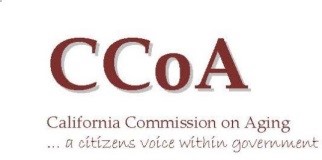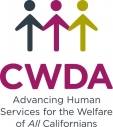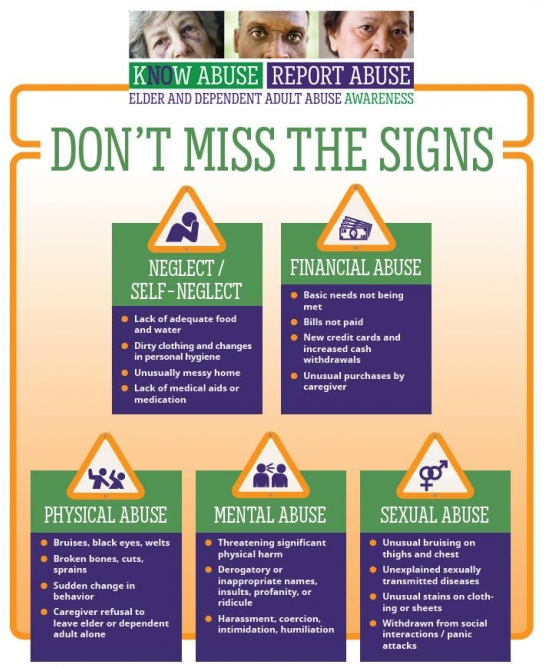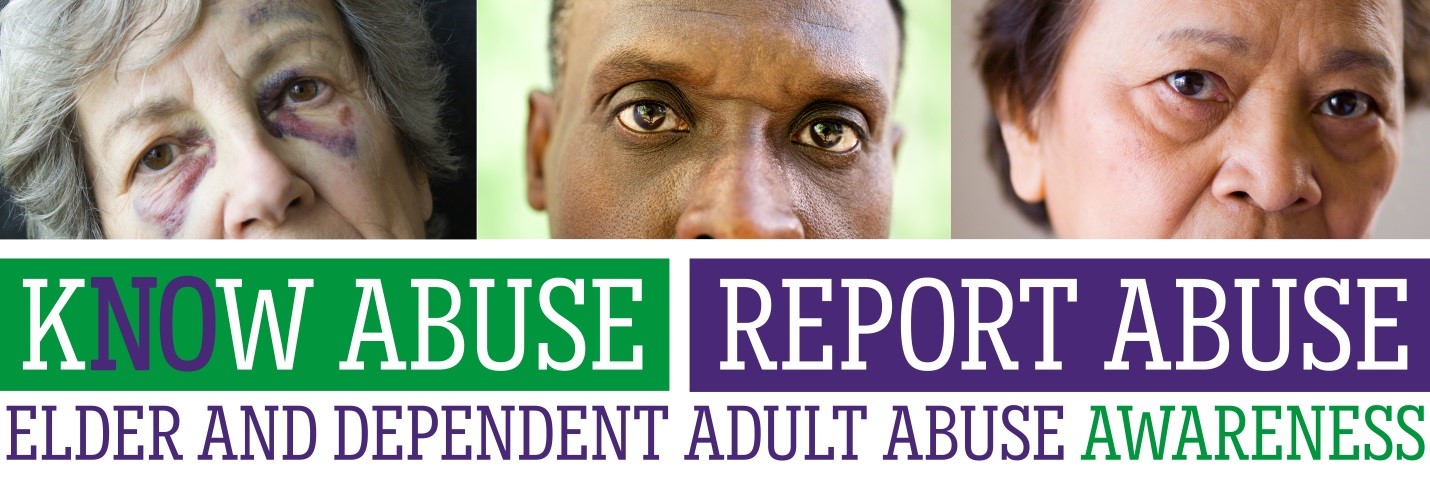
Elder and Dependent Adult Abuse Awareness
HELP US SPREAD THE WORD:
KNOW ABUSE REPORT ABUSE
How big of an issue is elder abuse in California?
Here in California, Adult Protective Services (APS) receives more than 15,000 reports of elder and dependent adult abuse per month, and reports are increasing.
There are an estimated 202,549 cases of reported elder and dependent adult abuse PER YEAR in California. Elder abuse is significantly underreported. For every case known to programs and agencies, 24 are unknown. For financial abuse, only one in 44 cases is known.
Help the California Association of Area Agencies of Aging and partners around the state to raise awareness about elder and dependent adult abuse. Learn about the different types of abuse, how to recognize them and how to report abuse to the appropriate local agencies.
Types of Elder Abuse
The State of California Recognizes Eight Types of Abuse:
- Self-Neglect – Refusal or failure to provide himself/herself with adequate food, water, clothing, shelter, personal hygiene, medication (when indicated), and safety precaution.
- Physical Abuse – The use of physical force that may result in bodily injury, physical pain, or impairment; or any physical injury to an adult caused by other than accidental means.
- Neglect by Others – Failure to provide the basic care, or services necessary to maintain the health and safety of an adult: this failure can be active or passive.
- Sexual Abuse – Sexual contact with a non-consenting adult or with an adult considered incapable of consenting to a sexual act.
- Financial Abuse – The illegal or unethical exploitation and/or use of an elder’s funds, property, or other assets.
- Mental Abuse – Verbal or emotional abuse includes threatening significant physical harm or threatening or causing significant emotional harm to an adult through the use of: Derogatory or inappropriate names, insults, verbal assaults, profanity, or ridicule; or harassment, coercion, threats, intimidation, humiliation, mental cruelty, or inappropriate sexual comments.
- Abandonment – the desertion or willful forsaking by anyone having responsibility for care.
- Isolation – Preventing the individual from receiving mail, telephone calls, or visitors.
How to Recognize Abuse
Don’t miss the signs of elder abuse:
1. Lack of basic amenities
2. Cluttered, filthy living environment
3. Unexplained or uncharacteristic changes in behavior
4. Unexplained sexually transmitted diseases
5. Unpaid bills, new credit cards and/or increased cash withdrawals
6. Harassment, coercion, intimidation, humiliation
7. Caregiver isolates elder
How to Report Abuse
In an emergency, call 911. To report cases of abuse, whether it is on your own behalf or that of someone you know, please call your counties Adult Protective Services or California State Long-Term Ombudsman. County specific numbers listed below.
Adult Protective Services (APS) responds to reports from individuals, concerned citizens, social service and health providers, and law enforcement representatives about developmental disabled adults, physically and mentally disabled adults, and the elderly who may be physically or financially abused, neglected, or exploited. Upon receipt of a referral, APS sends a social worker to make a home visit or contact the elder or dependent adult.
The Long-Term Care Ombudsman Program investigates elder abuse complaints in long-term care facilities and in residential care facilities for the elderly. The primary responsibility of the program is to investigate and endeavor to resolve complaints made by, or on behalf of, individual residents in these facilities, including nursing homes, residential care facilities for the elderly, and assisted living facilities. The goal of the program is to advocate for the rights of all residents in long term care
To report In-Home Supportive Services (IHSS) provider fraud, call 1(888) 717-8301 or 1(800) 722-0432. To be connected with ElderCare Locator, a nationwide service that connects older Americans and their caregivers with trustworthy local support resources, call 1(800) 677-1116.
Who is Mandated to Report Abuse
California law mandates that certain individuals report known or suspected incidences of elder or dependent adult abuse. Failure to do so is a crime.
WHO: Persons who are responsible, in whole or part, for care or custody of an elder or dependent adult, whether or not that person receives compensation, are mandated reporters of elder and dependent adult abuse, including: administrators, supervisors, and any licensed staff of a public or private facility that provides care or services for older or dependent adults, or any elder or dependent adult care custodian, health practitioner, or employee of a county adult protective services agency or local law enforcement agency. In addition, all officers and employees of financial institutions are mandated reporters for suspected financial abuse of elders and dependent adults.
WHEN: By telephone immediately, or as soon as practically possible to the appropriate local agency: adult protective services, law enforcement, and/or long term care ombudsman; AND, by written report, California Department of Social Services Form “Report of Suspected Dependent Abuse/Elder Abuse” (SOC 341), sent within two working days.
Partners
Thank you to all our partners.
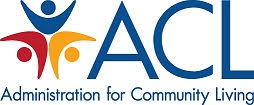

Office of the State Long-Term Care Ombudsman
© 2019 California Association of Area Agencies of Aging | Privacy Policy


